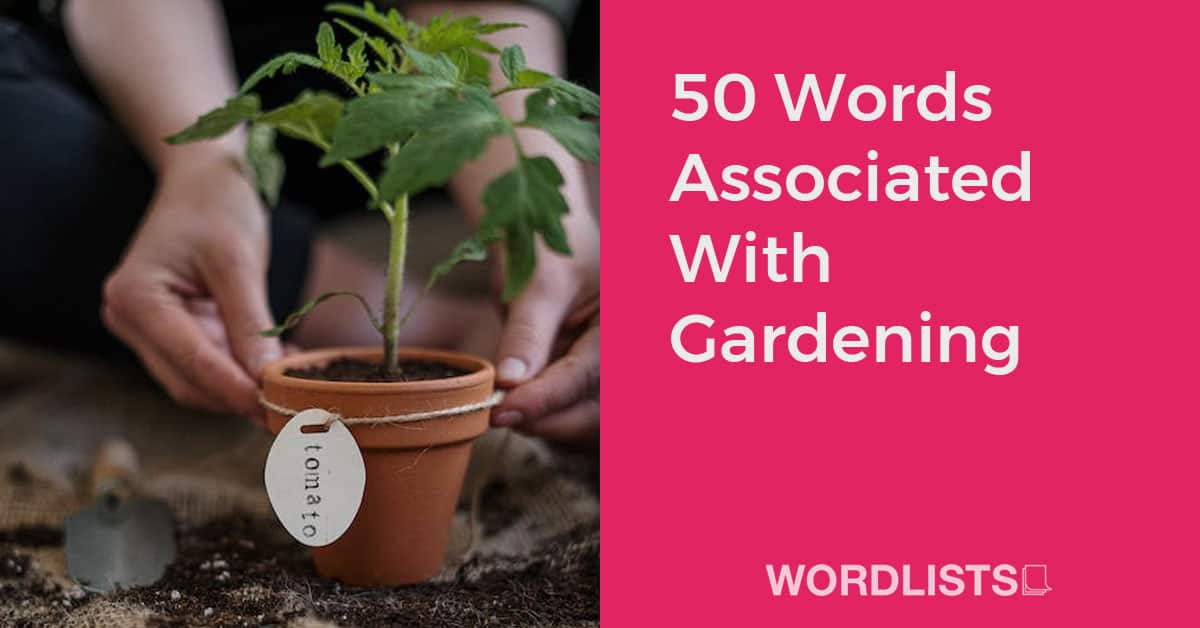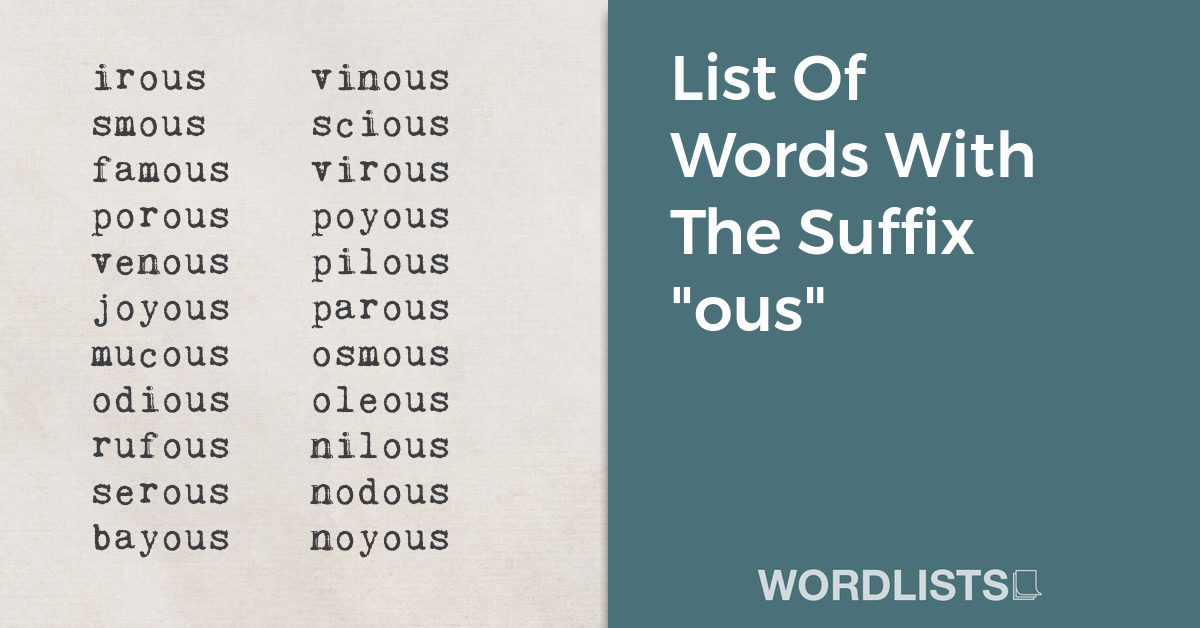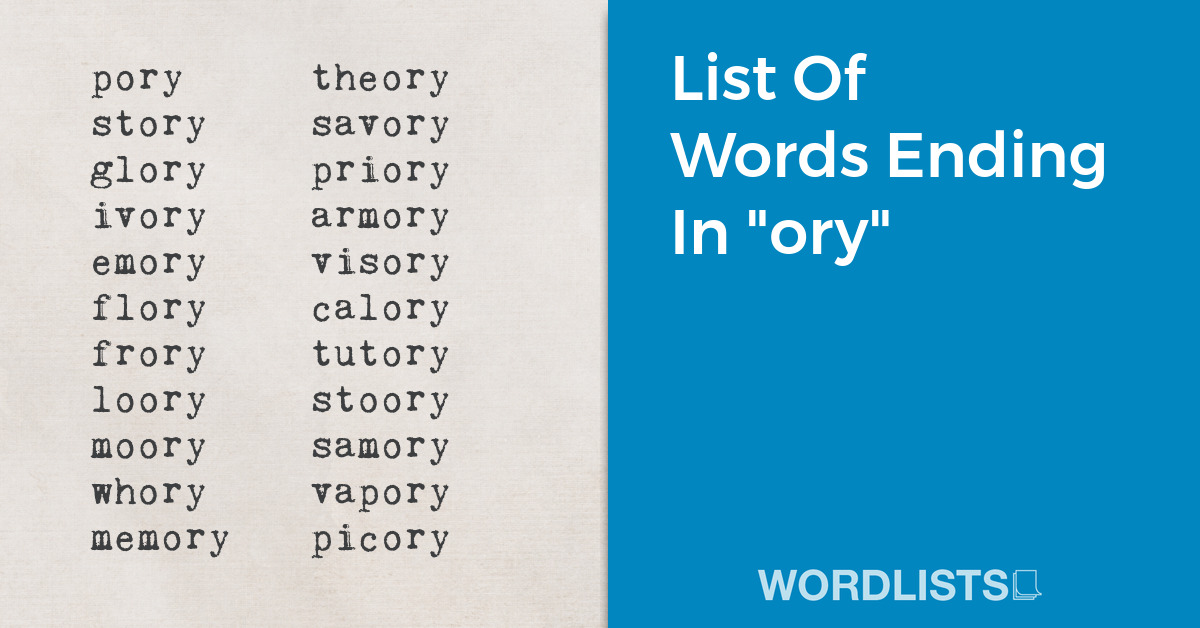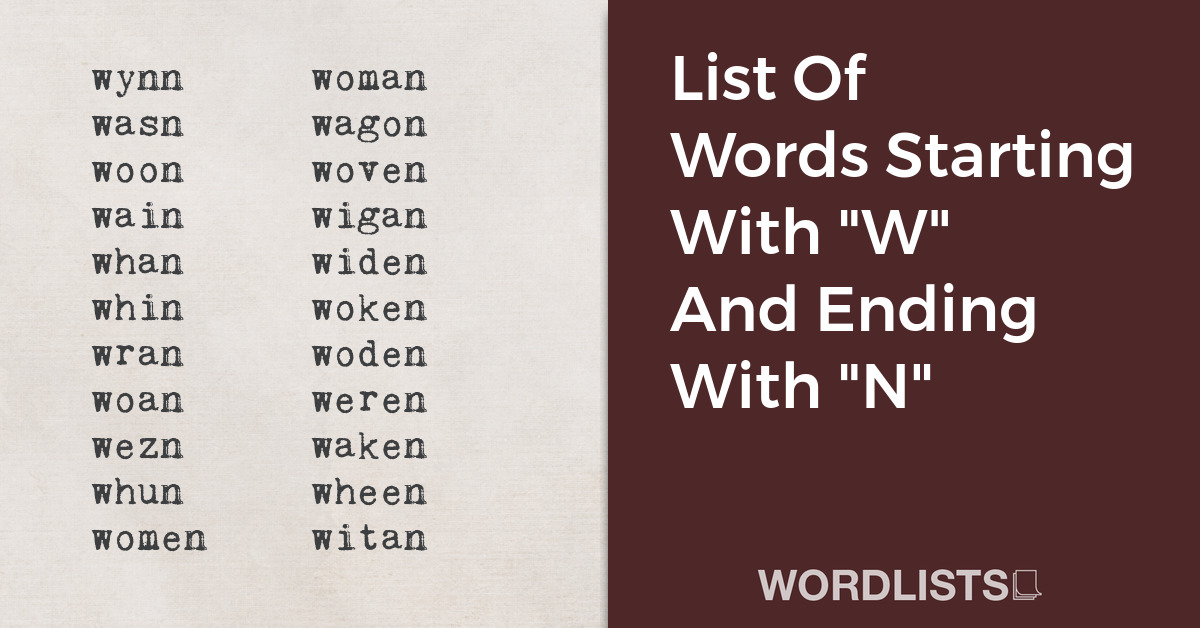Gardening is a beloved hobby and a vital part of many people’s lives, and as a result, it has its unique vocabulary. From the types of plants and their care to the tools and techniques used in gardening, there are countless words and terms associated with this rewarding pastime.
In this list, we’ll go through 50 words that are commonly associated with gardening, ranging from basic terms to more advanced concepts. Whether you’re a seasoned gardener or just starting out, you’re sure to learn something new and broaden your understanding of this wonderful hobby.

Subscribe to our mailing list to receive FREE exclusive content and offers!
50 Words Associated With Gardening Meanings
Plants: Living organisms that grow in the ground, usually producing oxygen and taking in carbon dioxide through photosynthesis. They form the basis of gardening.
Flowers: The reproductive part of a plant, often brightly colored and fragrant to attract pollinators. They are commonly grown in gardens for their aesthetic appeal.
Vegetables: Edible parts of plants that are often cultivated in gardens. They can include roots, stems, leaves, flowers, fruits, and seeds.
Herbs: Plants valued for their medicinal properties, flavor, scent, or other attributes. They are often grown in gardens for culinary and medicinal uses.
Fruits: The mature ovaries of flowering plants, often sweet or sour, and eaten as a part of a plant-based diet. Many gardeners grow fruit trees and bushes.
Seeds: The small, embryonic plants enclosed in a protective outer covering from which a new plant can grow. Seeds are typically the starting point for many garden plants.
Seedlings: Young plants that have recently germinated from a seed.
Soil: The upper layer of earth in which plants grow, a black or dark brown material typically consisting of a mixture of organic remains, clay, and rock particles. It’s the medium in which garden plants grow.
Compost: Organic matter that has been decomposed and recycled as a fertilizer and soil amendment, often used in gardening.
Mulch: Material spread over the surface of soil to conserve moisture, improve fertility, reduce weed growth, and enhance the visual appeal of an area.
Fertilizer: A substance added to soil or land to increase its fertility. It often contains nutrients that plants need to grow.
Watering: The process of adding water to plants. Proper watering is an essential part of gardening.
Irrigation: The artificial application of water to land or soil to assist in the growth of crops.
Drainage: The removal of water from soil, important in preventing waterlogged soil which can damage plants.
Weeding: The process of removing unwanted plants (weeds) that compete with cultivated plants for nutrients, light, and space.
Pruning: The process of selectively removing parts of plants, such as branches, buds, or roots, to improve the plant’s shape, growth, or yield.
Trimming: Similar to pruning, but often refers to maintaining a plant or hedge at a desired shape and size.
Deadheading: The practice of removing spent flowers from a plant to encourage further blooming.
Dividing: A method of propagation where a plant, usually a perennial, is split into two or more parts, each with roots, to create new plants.
Transplanting: The process of moving a plant from one growing environment to another, such as from a pot to the ground or vice versa.
Propagating: The process of creating new plants from a variety of sources like seeds, cuttings, bulbs, and other plant parts.
Pests: Organisms that are detrimental to plants, often causing damage to plants and gardens. Common pests include insects, mites, rodents, slugs, snails, and birds.
Diseases: Conditions that affect plant health, often caused by fungi, bacteria, or viruses.
Control: The management of pests and diseases to limit their impact on plant health.
Greenhouse: A structure with walls and roof made chiefly of transparent material, like glass, used for growing plants under controlled environmental conditions.
Raised bed: A type of garden where the soil is enclosed in a frame above the ground, often used for its improved drainage and compactness.
Container: Any vessel used for growing plants, such as pots, boxes, and hanging baskets.
Pot: A typically round container used for growing a plant.
Tray: A flat, shallow container, often used for starting seeds or propagating plants.
Trowel: A small handheld tool with a flat, pointed blade, used to dig small holes and move plants in the garden.
Shovel: A tool with a broad flat blade and typically upturned sides, used for digging, lifting, and moving material, such as soil.
Rake: A tool with a long handle and a wide head of prongs used for gathering leaves or other material or for loosening soil.
Hoe: A gardening tool with a thin flat blade on a long handle, used for weeding and breaking up the soil.
Pruner: A gardening tool, often handheld, used for cutting off branches, twigs, leaves, and other parts of plants.
Scissors: A hand-operated cutting instrument used for trimming and shaping plants.
Gloves: Protective coverings for the hands, often used in gardening to protect the skin from thorns, sharp tools, and harsh substances.
Hat: A head covering, often worn in the garden for sun protection.
Sunscreen: A lotion, spray, gel, or other topical product that absorbs or reflects some of the sun’s ultraviolet radiation, often used by gardeners to protect their skin.
Insect repellent: A substance applied to skin, clothing, or other surfaces to discourage insects from landing or climbing on that surface.
Kneeler: A cushioned pad used to protect the knees while kneeling, often used in gardening tasks.
Bench: A long seat for several people, often made of wood or metal, that can be used for resting in a garden.
Trellis: A framework of light wooden or metal bars used as a support for climbing plants.
Support: Any structure that helps to keep a plant upright or guides its growth. Supports include stakes, cages, and trellises.
Stake: A strong stick or rod driven into the ground to support a plant.
Cage: A support structure for plants, typically made of wire and used to support tomatoes, peas, and other climbing plants.
Netting: A type of fencing made from net, used to protect plants from birds or pests.
Fence: A barrier, railing, or other upright structure, typically of wood or wire, enclosing an area of ground to mark a boundary, control access, or prevent escape, often used in a garden to keep out animals.
Landscape: All the visible features of an area of land, often considered in terms of their aesthetic appeal.
Design: The plan or arrangement of elements in a garden, such as plants, paths, and structures.
Decorate: The process of making something look more attractive by adding extra items or images to it, often used in the context of gardens with the addition of ornamental features.







